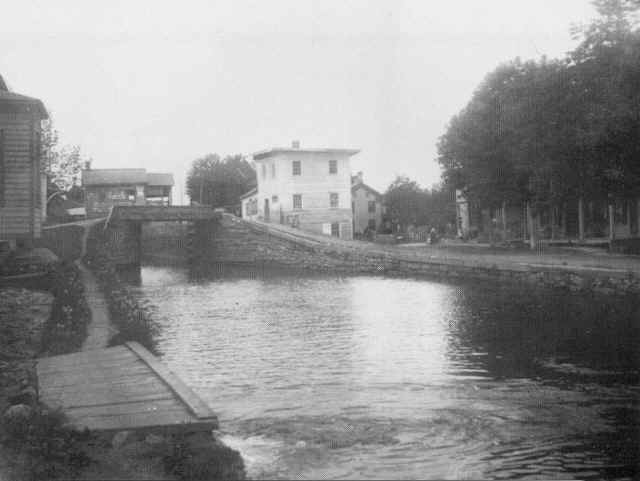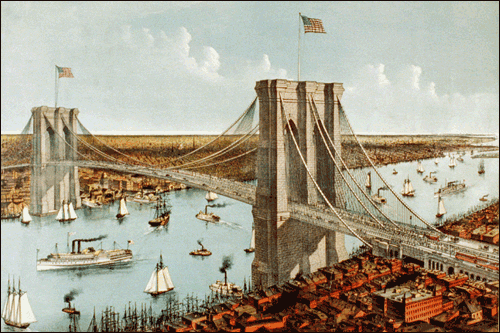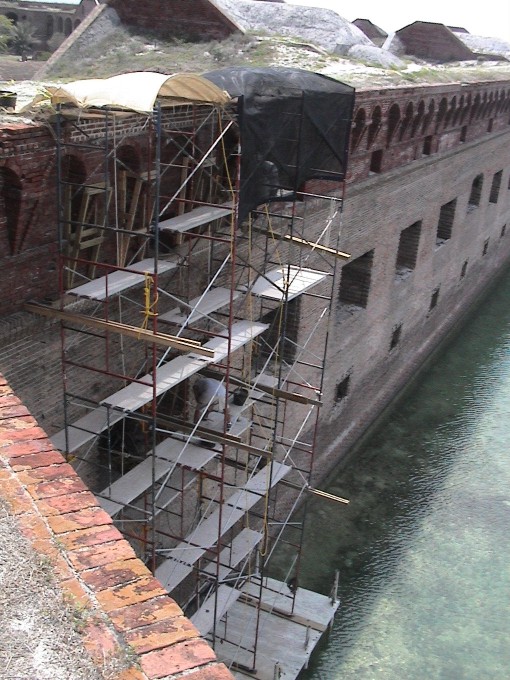|
Edison Coatings, Inc. is now producing authentic Rosendale Natural Cement and Rosendale Natural Cement-Based mortars and
renders. The following is a brief history and background of Rosendale Natural cement. For additional information on Natural
cement and Edison Coatings, Inc. Rosendale Natural Cement Products, visit our new Rosendale Cement web site at www.rosendalecement.net.
ROSENDALE NATURAL CEMENT PRODUCTS®
Natural cement was the binder of choice in North America for large scale masonry and concrete construction during the 19th and early 20th century. Now
this authentic technology is back in production and is available exclusively from Edison Coatings, Inc. Visit our new web site dedicated to Rosendale Natural Cement Products® to learn more about Rosendale Natural Cements, Rosendale Natural Cement Masonry Mortars, Rosendale Natural Cement Stucco, and more
.
Rosendale 10C Natural Cement
Rosendale 11Gi, 11G Injection Grouts
Rosendale 12M Masonry Mortars
Rosendale 13P Patching Compounds
Rosendale 14S Stucco
Rosendale 15W Whitewash
Rosendale 16B Beton (Concrete)
What is Natural Cement?
Natural cement is quite different from the Portland cement used throughout the world today. Natural cement is
made from a type of limestone with a high clay content. When the limestone is heated to the proper temperature (calcined), it forms natural cement. Once the calcined rock is ground to a fine powder, the natural
cement obtained by this process will set when mixed with water.
 Natural cement was used extensively in North America from 1818 to
1976. Prior to that, some quantities were imported from Europe. In the early years of its use, it provided a means of producing durable structures such as locks, bridges and retaining walls that had to
withstand being immersed in water. Its early uses included canal construction, including such projects as the Delaware and Hudson Canal and the Erie Canal. It was used during the 1800's in place of lime,
for building large brick and stone buildings. Because natural cement sets faster than lime or lime putty, buildings could rise faster when natural cement was used, an important advantage during the
Industrial Revolution, when America's cities began to grow rapidly. The U. S. Army Corps of Engineers also quickly recognized the advantages of
natural cement and used it extensively in the construction of coastal fortresses. Natural cement was used extensively in North America from 1818 to
1976. Prior to that, some quantities were imported from Europe. In the early years of its use, it provided a means of producing durable structures such as locks, bridges and retaining walls that had to
withstand being immersed in water. Its early uses included canal construction, including such projects as the Delaware and Hudson Canal and the Erie Canal. It was used during the 1800's in place of lime,
for building large brick and stone buildings. Because natural cement sets faster than lime or lime putty, buildings could rise faster when natural cement was used, an important advantage during the
Industrial Revolution, when America's cities began to grow rapidly. The U. S. Army Corps of Engineers also quickly recognized the advantages of
natural cement and used it extensively in the construction of coastal fortresses.
The durability of natural cement in wet, harsh coastal environments was superior to lime mortar, and when
mixed with the right amounts and types of sand and stone, it creates a high quality concrete. Natural cement
concrete and mortar were used to construct the supports for the Brooklyn Bridge, among many other structures and buildings.
 At the height of its popularity, in the 1890's, approximately 10 million barrels (300 lbs each) per year of natural cement were
produced in the United States. This is the equivalent of 30 million bags of modern Portland cement, or roughly 2.7 billion pounds. The cement was produced at more than 71 sites in 17 states. Collectively they became known as Rosendale cements. At the height of its popularity, in the 1890's, approximately 10 million barrels (300 lbs each) per year of natural cement were
produced in the United States. This is the equivalent of 30 million bags of modern Portland cement, or roughly 2.7 billion pounds. The cement was produced at more than 71 sites in 17 states. Collectively they became known as Rosendale cements.
Portland cement is different from natural cement in that it is made from artificial mixtures of limestone, shale, gypsum and a variety of
other ingredients. These mixtures are heated to much higher temperatures than those typically used to produce natural cement, fusing the ingredients into a "clinker", which is then ground to a
fine powder. Because of these higher temperature firing requirements, Portland cement production consumes more energy than natural cement.
Portland cement reaches higher strength than natural cements, and it comes up to strength more rapidly. For
this reason, it began to replace natural cement for use in concrete construction in the late 1890's, and by 1910, use of natural cement had declined dramatically.
The properties of natural cement and Portland cement are quite different. Natural cement has properties which
are more similar to lime-cement mixtures than they are to cement alone. It is more permeable and less brittle. It
does not contain the salts typically found in Portland cement, and may therefore have less potential for damaging masonry with which it is used. Mortars made with natural cement have been used to build massive
masonry structures without the use of expansion joints, but still showing no signs of thermal expansion-related
cracking. Portland cement mortars alone are too hard for use in masonry construction, and Portland cements
modified with lime or limestone to create masonry cement still require design of closely spaced expansion joints
. After a number of decades of exposure, Portland cement-lime and masonry cement mortars embrittle and
crack, necessitating repointing (cutting out a portion of the surface of the mortar and placing new mortar, a
costly and invasisve process). Natural cement mortars have survived more than 150 years without embrittling to the point of requiring complete repointing.
As late as the 1960's, natural cement was being used in combination with Portland cement to improve concrete
durability for such projects as the construction of the New York State Thruway system. The last of the Rosendale
-based producers, Century Cement, closed in 1970. Fort Scott Hydraulic Cement Co. in Kansas closed in 1976. Yet the material did not entirely disappear, remaining a component in masonry cements produced by some
companies well into the 1990's. But something of value was lost when the construction industry moved on to faster, stronger and cheaper construction using Portland cement; the unique performance properties,
superlative long-term durability and the more environmentally friendly natural cements were relegated to history prematurely and short sightedly.
 Only relatively recently has the restoration industry renewed an interest in natural cements. The industry prizes
using authentic replacement-in-kind when restoring historic structures, and is coming to recognize, once again, just how well natural cements performed and over low long a period
of time they have endured. While some have been promoting the use of hydraulic limes used in artificial mixtures with clay to simulate natural cement, these are not, by definition,
authentic natural cements and are not replacements-in-kind. Only relatively recently has the restoration industry renewed an interest in natural cements. The industry prizes
using authentic replacement-in-kind when restoring historic structures, and is coming to recognize, once again, just how well natural cements performed and over low long a period
of time they have endured. While some have been promoting the use of hydraulic limes used in artificial mixtures with clay to simulate natural cement, these are not, by definition,
authentic natural cements and are not replacements-in-kind.
Edison Coatings, Inc., leaders in restoration products for historic masonry, stone and concrete, is currently offering
authentic natural cements and cement products, produced from authentic natural cement rock. For information on these historically accurate natural cements, visit www
.rosendalecement.net.
Photo: Installation of Natural Cement at Fort Jefferson, Dry Tortugas National Park, Florida in 2004.
[Top of Page
|